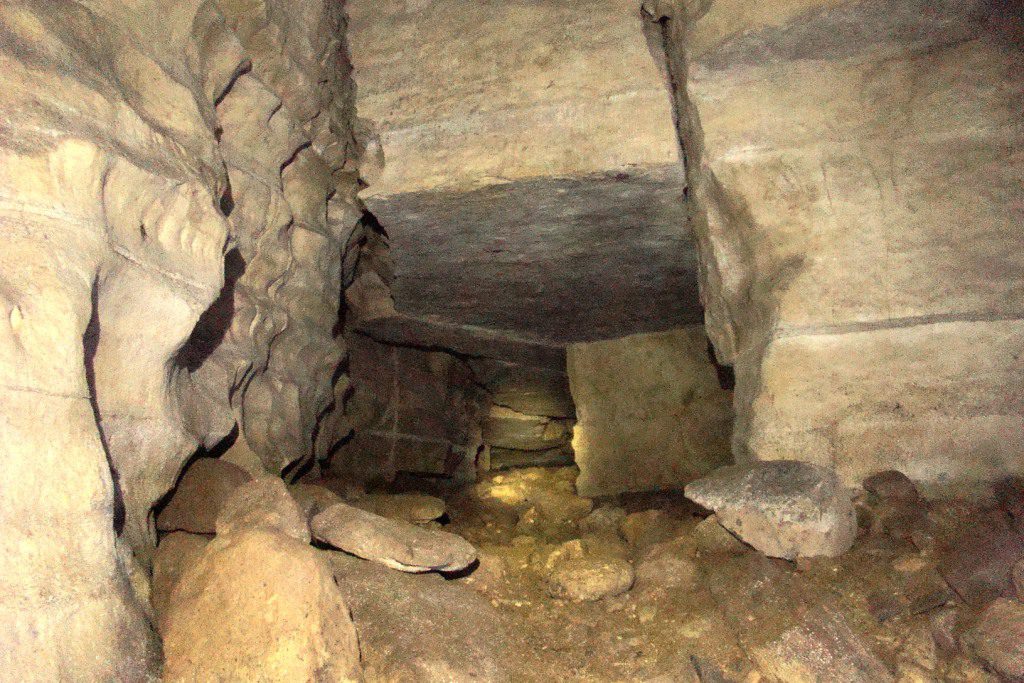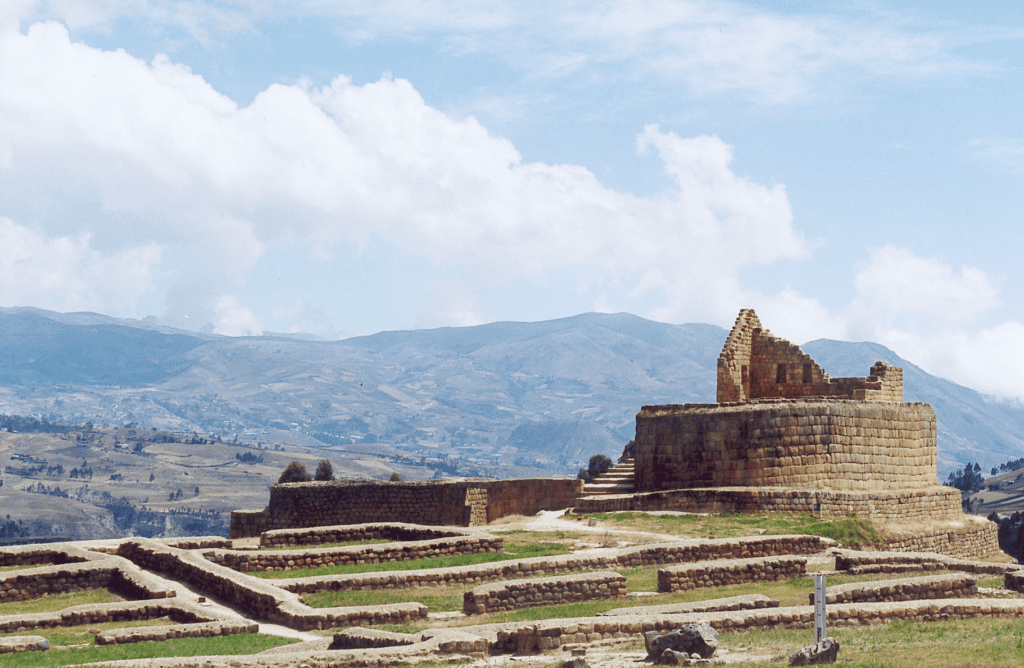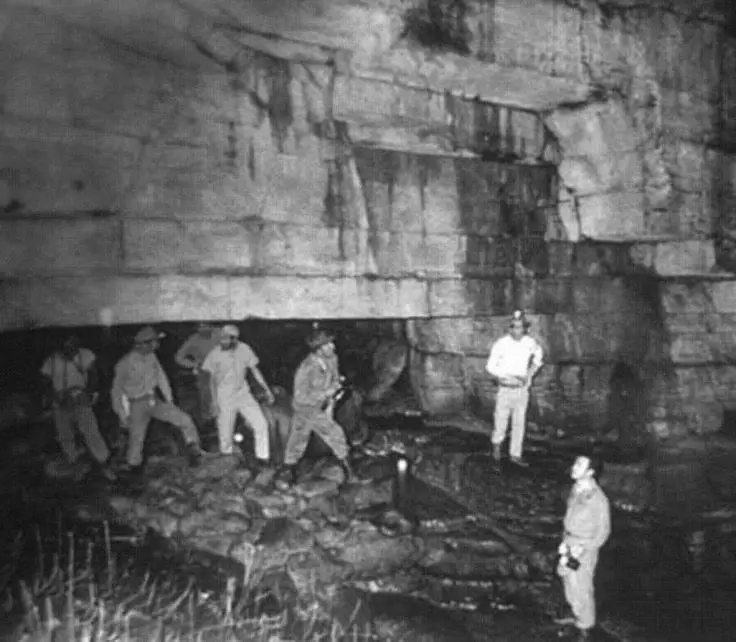The Cueva de los Tayos, also known as the Cave of the Oilbirds, is a limestone cave located in the Amazon rainforest of Ecuador. It gained worldwide attention in the 1970s due to various claims and stories surrounding its mythology. The mythology of the Cueva de los Tayos is primarily associated with the controversial adventurer and explorer, Juan Moricz, who claimed to have discovered remarkable treasures and ancient artifacts within the cave.
According to the mythology, Juan Moricz explored the cave in the mid-20th century and allegedly found a vast underground network of tunnels extending for hundreds of kilometers. He claimed that these tunnels contained evidence of an advanced lost civilization, which he referred to as the “Xibalba” or “Land of the Gods.” Moricz described encountering hieroglyphs, gold artifacts, advanced machinery, and even a library of metal books.
Furthermore, Moricz claimed to have witnessed a subterranean city inhabited by a mysterious group of tall, fair-skinned, and technologically advanced beings. He believed that these beings were the remnants of an ancient civilization that possessed knowledge far beyond what was known to modern society.
The mythology surrounding the Cueva de los Tayos gained even more intrigue when the famous Swiss author Erich von Däniken popularized the cave in his book “Gold of the Gods” published in 1972. Von Däniken incorporated Moricz’s claims into his theories of ancient astronaut visitations and proposed that the artifacts found in the cave were evidence of extraterrestrial civilizations interacting with humans in the distant past.
Despite the sensational claims, the mythology of the Cueva de los Tayos remains highly controversial and lacks scientific evidence. The cave has been explored by various expeditions, including a joint Ecuadorian-British expedition in the 1970s, but no conclusive evidence of an advanced civilization or extraterrestrial presence has been found.
In recent years, the mythology surrounding the Cueva de los Tayos has been largely debunked and dismissed as pseudoscience. Many researchers believe that Juan Moricz and Erich von Däniken exaggerated or fabricated their accounts for personal gain and to promote their own theories. The artifacts that were claimed to be from the cave have been found to be inconsistent and not of ancient origin.
Today, the Cueva de los Tayos remains an important archaeological site in Ecuador, attracting explorers, scientists, and tourists interested in its natural beauty and geological formations. While the cave may not hold the mythical treasures and advanced civilizations once claimed, it continues to captivate the imagination of many due to its rich history and the mysteries it still holds.

Did Neil Armstrong visit the Ecuador’s Cueva de los Tayos?
There is a persistent myth that suggests astronaut Neil Armstrong, the first person to walk on the Moon, participated in a secret expedition to the Cueva de los Tayos. According to the myth, Armstrong and a team of scientists and military personnel visited the cave in the late 1970s or early 1980s. However, there is no credible evidence to support these claims.
The story seems to have originated from a book published in 1975 titled “Gold of the Gods” by Erich von Däniken. In the book, von Däniken claimed that Armstrong had secretly explored the cave and discovered evidence of advanced ancient civilizations. However, these claims were not substantiated with any verifiable evidence or reliable sources.
Neil Armstrong himself denied participating in any expedition to the Cueva de los Tayos. In an interview in 1998, Armstrong addressed the rumors and stated that he had never been to the cave and had no knowledge of any underground tunnels or ancient artifacts.
It’s important to note that Armstrong was a renowned astronaut and engineer, and his denial carries significant weight. The myth linking him to the Cueva de los Tayos expedition is widely regarded as unfounded and has been debunked by researchers and experts.
It is not uncommon for legends and myths to circulate, especially when they involve famous individuals and mysterious places. However, in the case of Neil Armstrong’s alleged expedition to the Cueva de los Tayos, there is no credible evidence to support the claims, and it is generally considered to be a fictional story without any factual basis.
Now for the facts about the Cueva de los Tayos in Ecuador
Location: The Cueva de los Tayos is located in the province of Morona-Santiago in southeastern Ecuador, within the Amazon rainforest. It lies in the Cordillera del Cóndor region, near the border with Peru.
Geological Formation: The cave is a limestone formation, characterized by intricate networks of tunnels, chambers, and underground rivers. It was formed over millions of years through the erosion of soluble rock by water.
Size and Depth: The cave is estimated to extend for over 20 kilometers (12 miles). Its deepest explored point reaches approximately 860 meters (2,800 feet) below the surface.
Fauna: The Cueva de los Tayos is known for its diverse wildlife. The cave is home to oilbirds (Steatornithidae), which are nocturnal birds that navigate using echolocation. The presence of these birds gave the cave its alternative name, “Cave of the Oilbirds.” Other cave-dwelling fauna include various bat species, spiders, insects, and amphibians.
Flora: The surrounding area of the cave is part of the Amazon rainforest, known for its incredible biodiversity. The vegetation includes dense tropical forests, with a variety of trees, plants, and lianas. The area is characterized by a lush and diverse ecosystem, with numerous species of orchids, bromeliads, ferns, and other epiphytic plants.
Indigenous Cultural Significance: The cave holds cultural significance for local indigenous communities, such as the Shuar and Achuar people. It is considered a sacred place, associated with myths and legends passed down through generations.
Exploration: The Cueva de los Tayos has been the subject of several scientific expeditions and explorations. In the 1970s, a joint Ecuadorian-British expedition led by Stan Hall explored the cave extensively, mapping its chambers and passages. Since then, numerous researchers and adventurers have visited the cave to study its geology, ecology, and archaeological potential.
Conservation: The cave and its surrounding area are protected within the Morona-Santiago Ecological Reserve, established in 1996 to preserve the rich biodiversity of the region. The Ecuadorian government recognizes the importance of the cave and its ecosystem, and efforts are made to ensure its conservation and sustainable management.
These facts provide a glimpse into the unique features and ecological significance of the Cueva de los Tayos and its surroundings in the Ecuadorian Amazon rainforest.

Jake is originally from Sydney and co-founded Ecuador Eco Adventure with Wlady back in 2006. Together they built one of the country's most prominent climbing and hiking agency that is number one in summit attempts of Chimborazo, Cotopaxi, Antisana, and Cayambe. Ecuador Eco Adventure has since been recommended in National Geographic Adventure, The Rough Guide, and the Lonely Planet.



8 Comments
I just want to a video of those produced by Gaa and it actually showed pictures that were taken of Neil Armstrong when he went on the mission to the cave to on his secret expedition. How do you explain that?
mmhh…where can i find this video?
3/15/2025, Expedition X on the travel channel, w/ Josh gates & the DAUGHTER of Juan Moricz went to Tayos caves who was the head of this expedition on this date. Neil Armstrong was in the FIRST expedition to these caves in 1972 according to Moricz’s daughter. During the filming, Josh found a hole in one of the walls & everyone /camera crew included/ went through. They had to go under water for about a minute, but when they got through…they found writing in the stone walls AND!! man made stairs. A WHOLE new chamber was discovered. Can’t wait for a follow up.
Thank you due to your comment I was able to watch that episode. ☺️ this cave is so interesting.
I’m pretty sure it was in a Daniken book that I read that Armstrong was interested but declined to go on the expedition.
I just watched expedition X and watched the episode “hunt for the metal library “ season 5 episode 6. They show pictures of Neil Armstrong inside the Tayos cave. It makes me wonder why he denied being there…could it be that he knew or saw something that he does not want to be associated with. Also I’m sure the cave has been looted.
YES NEIL ARMSTRONG WENT TO THE ECUADOR CAVES. WHY DOES YOUR STORY SAY HE DIDN’T??
Yes Neil Armstrong did go to the Ecuador caves in 1976. I don’t know why this article says he didn’t.
Functional Always active
Preferences
Statistics
Marketing